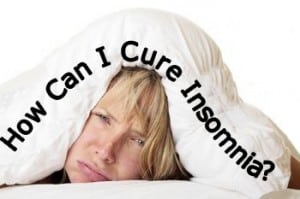Obstructive Sleep Apnea (OSA)

is the most common type of sleep apnea and is caused by obstruction of the upper airway. It is characterized by repetitive pauses in breathing during sleep, despite the effort to breathe, and is usually associated with a reduction in blood oxygen saturation.
These pauses in breathing, called “apneas” (literally, “without breath”), typically last 20 to 40 seconds.[1]
The individual with OSA is rarely aware of having difficulty breathing, even upon awakening. It is recognized as a problem by others witnessing the individual during episodes or is suspected because of its effects on the body (sequelae). OSA is commonly accompanied with snoring
Restless Leg Syndrome

not only affects the legs, but can affect the arms, torso, head, and even phantom limbs. Moving the affected body part modulates the sensations, providing temporary relief.
WED/RLS sensations range from pain or aching in the muscles, to “an itch you can’t scratch”, an unpleasant “tickle that won’t stop”, or even a “crawling” feeling. The sensations typically begin or intensify during quiet wakefulness, such as when relaxing, reading, studying, or trying to sleep.
Additionally, most individuals with WED/RLS suffer from periodic limb movement disorder (limbs jerking during sleep), which is an objective physiologic marker of the disorder and is associated with sleep disruption.
Some controversy surrounds the marketing of drug treatments for WED/RLS. It is a “spectrum” disease with some people experiencing only a minor annoyance and others suffering major disruption of sleep and significant impairments in quality of life.
Narcolepsy

Narcolepsy is a chronic neurological disorder caused by the brain’s inability to regulate sleep-wake cycles normally. It often begins mildly and progresses over a period of time until it reaches full manifestation.
The term narcolepsy derives from the French word narcolepsie created by the French physician Jean-Baptiste-Édouard Gélineau by combining the Greek νάρκη (narkē, “numbness” or “stupor”), and λῆψις (lepsis), “attack” or “seizure”.
Narcolepsy is a neurological sleep disorder. It is not caused by mental illness or psychological problems. It is most likely affected by a number of genetic mutations and abnormalities that affect specific biologic factors in the brain, combined with an environmental trigger during the brain’s development, such as a virus.
People with narcolepsy often experience disturbed nocturnal sleep and an abnormal daytime sleep pattern, which often is confused with insomnia. Narcoleptics, when falling asleep, generally experience the REM stage of sleep within 5 minutes, while most people do not experience REM sleep until an hour or so later. REM sleep is where most dreams occur.
One of the many problems that some narcoleptics experience is cataplexy, a sudden muscular weakness brought on by strong emotions (though many people experience cataplexy without having an emotional trigger).
It often manifests as muscular weaknesses ranging from a barely perceptible slackening of the facial muscles to the dropping of the jaw or head, weakness at the knees (often referred to as “knee buckling”), or a total collapse.
Usually, speech is slurred and vision is impaired (double vision, inability to focus), but hearing and awareness remain normal. In some rare cases, an individual’s body becomes paralyzed and muscles become limp (loss of muscle tone). Cataplexy also has a severe emotional impact on narcoleptics, as it can cause extreme anxiety, fear, and avoidance of people or situations that might elicit an attack. Some narcolepsy affected persons also experience heightened senses of taste and smell.
Insomnia

Insomnia or sleeplessness is a sleep disorder in which there is an inability to fall asleep or to stay asleep as long as desired.
Insomnia is most often thought of as both a sign and a symptom that can accompany several sleep, medical, and psychiatric disorders characterized by a persistent difficulty falling asleep and/or staying asleep or sleep of poor quality. Insomnia is typically followed by functional impairment while awake.
While the term is sometimes used to describe a disorder demonstrated by polysomnographic evidence of disturbed sleep, insomnia is often practically defined as a positive response to either of two questions:
- “Do you experience difficulty sleeping?”
- “Do you have difficulty falling or staying asleep?”
Insomnia can occur at any age, but it is particularly common in the elderly.
Insomnia can be short term (up to three weeks) or long term (above 3–4 weeks), which can lead to memory problems, depression, irritability, and an increased risk of heart disease and automobile-related accidents.

